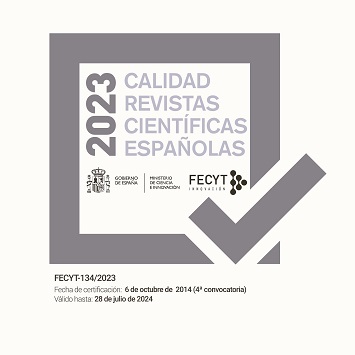Identidades en movimiento: la danza y la experiencia del sujeto en cinco bailarinas-estudiantes universitarias
Résumé
Se revisa la problemática general de la identidad y el cuerpo desde perspectivas biológicas, antropológicas y filosóficas, con especial énfasis en el desarrollo de la antropología del cuerpo y de la teoría del sujeto en dos vertientes: Judith Butler y el último Michel Foucault. En ese sentido se establece la danza y su relación con el cuerpo como un espacio/objeto de interés.Se exponen sucintamente los paradigmas de la neuro-estética y la neurobiología y se explicita su modelo epistémico. Se especifica de qué manera esa episteme se relaciona con las teorías del sujeto y cómo las transforma. Se señala su carácter contingente e histórico.
Por último se presentan los resultados de un breve trabajo etnológico que señala la importancia que tienen las ciencias humanas para mediar con el paradigma de las neurociencias y evitar determinismos.
Téléchargements
Références
BUTLER, Judith. 2004. Undoing Gender. Edición: New. New York ; London: Routledge.
BLÄSING, Betina, Beatriz CALVO-MERINO, Emily CROSS, Corinne JOLA, Julianne HONISCH, y Catherine STEVENS. 2012. «Neurocognitive control in dance perception and performance». Acta Pshychologica 139 (2): 300-308.
CHRISTENSEN, Julia F.; CALVO-MERINO B. (2013). Dance as a subject for empirical aesthetics
Psychology of Aesthetics, Creativity, and the Arts, Vol 7(1), Feb, 76-88
CROSS, E. S., TICINI, L. F. (2011). Neuroaesthetics and beyond: new horizons in applying the science of the brain to the art of dance. Phenomenology and the Cognitive Sciences 11(1), 5-16. (Special Issue: Dance and Cognitive Science). doi:10.1007/s11097-010-9190-y
Daprati, E., Iosa, M., Haggard, P. (2009). A dance to the Music of Time: Aesthetically-
Relevant Changes in Body Posture in Performing Art. Plos One, 4(3), 1-11.
DOWNING, P. E., JIANG, Y., SHUMAN, M., KANWISHER, N. (2001). A cortical area selective for visual processing of the human body. Science of Optimism and Hope, 293,
-2473.
ESTEBAN, Mari Luz. 2004. Antropología del cuerpo: Géneros, itinerarios corporales, identidad y cambio. Barcelona: Bellaterra.
FOUCAULT, Michel. 1994. Hermenéutica del sujeto. Traducido por Fernando Álvarez-Uría. Genealogía del Poder 25. Madrid: Endymion.
FOUCAULT, Michel. 2009. El Gobierno de Sí y de los otros. Editado por Michel Senellart. Traducido por Horacio Pons. México: Fondo de Cultura Económica.
GALLESE, V., FADIGA, L., FOGASSI, L., & RIZZOLATTI, G. (1996). Action recognition in the
premotor cortex. Brain, 119, 593-609.
HEISENBERG, Werner. 1958. Physics and Philosophy: The Revolution in Modern Science. New York: Harper.
IACOBONI, Marco. 2008. Mirroring People: The New Science of How We Connect with Others. New York: Farrar, Straus and Giroux.
JANG, S. H., POLLICK, F. E. (2011). Experience Influences Brain Mechanisms of
Watching Dance. Dance Research 29(2), 352–377.
JOLA, C., POLLICK, F.E. & CALVO-MERINO, B. (2014). "Some like it hot": spectators who score high on the personality trait openness enjoy the excitement of hearing dancers breathing without music. Frontiers in Human Neuroscience, 8, 718.
JORBA GALDOS, L. (2014) Creativity and dissociation. Dance/movement therapy interventions for the treatment of compartmentalized dissociation The Arts in Psychotherapy 41 467-477
KAWABATA, H, y S ZEKI. (2004). «Neural correlates of Beauty». Journal of Neurophysiology 91 (4) (Abril): 1699-1705.
LAKOFF, George, y Mark JOHNSON. 1980. Metaphors We Live by. Chicago: University of Chicago Press.
LEVY, I, U HASSON, y R MALACH. (2004). «One picture is worth at least a million neurons». Current Biology 14 (11): 996-1001.
RIZZOLATTI, G., & CRAIGHERO, L. (2004). The mirror-neuron system. Annual Review of Neuroscience, 27, 169-192.
SINIGAGLIA, Corrado, y G RIZZOLATTI. 2011. «Through the looking glass: self and others». Consciousness and Cognition 20 (1): 64-74.
PETRINI, K., CRABBE, F., SHERIDAN, C., & POLLICK, F. E. (2011). The Music of Your Emotions: Neural Substrates Involved in Detection of Emotional Correspondence between Auditory and Visual Music Actions. Plos One, 6(4),10. doi: e1916510.1371/journal.pone.0019165
THIEM, Annika. 2008. Unbecoming Subjects: Judith Butler, Moral Philosophy, and Critical Responsibility. New York: Fordham University Press.
Las obras que se publican en esta revista están sujetas a los siguientes términos:
1. El Servicio de Publicaciones de la Universidad de Murcia (la editorial) conserva los derechos patrimoniales (copyright) de las obras publicadas, y favorece y permite la reutilización de las mismas bajo la licencia de uso indicada en el punto 2.
2. Las obras se publican en la edición electrónica de la revista bajo una licencia Creative Commons Reconocimiento-NoComercial-SinObraDerivada 3.0 España (texto legal). Se pueden copiar, usar, difundir, transmitir y exponer públicamente, siempre que: i) se cite la autoría y la fuente original de su publicación (revista, editorial y URL de la obra); ii) no se usen para fines comerciales; iii) se mencione la existencia y especificaciones de esta licencia de uso.
3. Condiciones de auto-archivo. Se permite y se anima a los autores a difundir electrónicamente las versiones pre-print (versión antes de ser evaluada) y/o post-print (versión evaluada y aceptada para su publicación) de sus obras antes de su publicación, ya que favorece su circulación y difusión más temprana y con ello un posible aumento en su citación y alcance entre la comunidad académica. Color RoMEO: verde.












